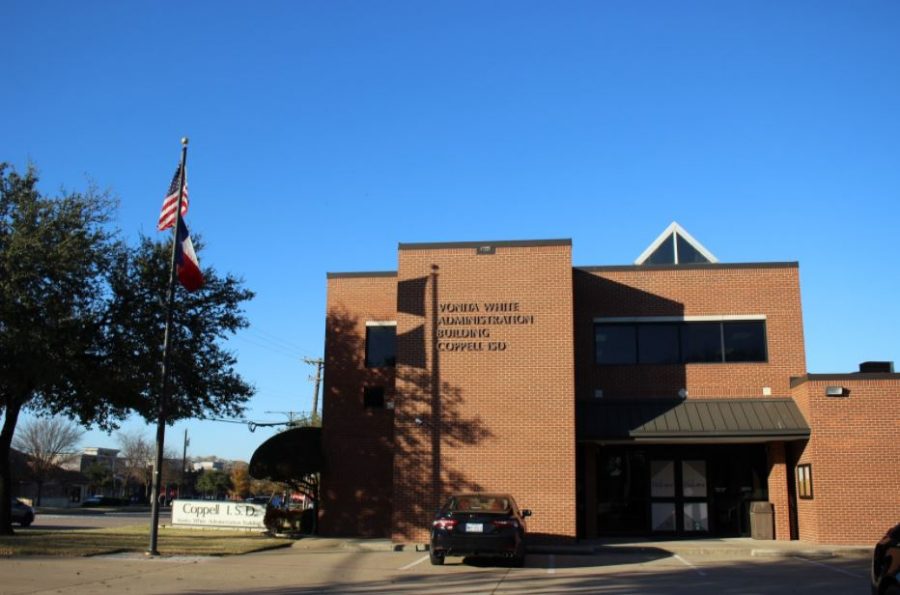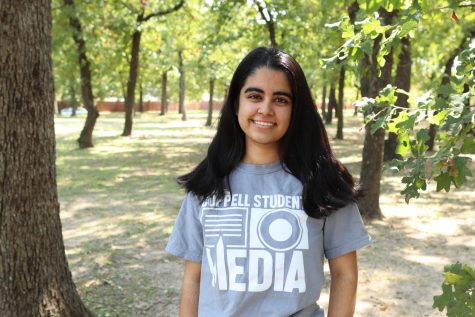Board reevaluating programs due to $7 million budget deficit
The Coppell ISD Board of Trustees reviewed the district’s current $7 million deficit and possible ways to reduce expenditure on Monday night. The board discussed cutting Coppell High School’s International Baccalaureate Program, requiring CHS students to take release periods and closing New Tech High @ Coppell as possible options.
December 11, 2020
At a special meeting of the Coppell ISD Board of Trustees on Monday evening, the board discussed options to alleviate the district’s current $7,239,447 budget deficit.
Some major factors contributing to the deficit include a decreasing enrollment growth rate, increase in teacher pay and the opening of Coppell High School Ninth Grade Campus and Canyon Ranch Elementary. The district’s goal budget deficit is $2 million and it plans to reduce expenditures by $5 million from the 2021-22 budget.
In addition to discussing revenue opportunities, such as expanding open enrollment and investigating a virtual school, potential expenditure reductions were explored. These reductions include cutting Coppell High School’s International Baccalaureate program, eliminating New Tech High @ Coppell and requiring CHS students to take release periods.
According to CISD chief financial officer Diana Sircar’s budget report to the board, the annual net cost of the IB program is an estimated $240,000. This includes the salaries of educators and subtracts the salaries of educators that CHS would still require to teach other classes if IB was no longer available.
“The kids that are in that IB program really enjoy that IB program,” CISD trustee Tracy Fisher said. “A lot of parents seek that and I know that there have been kids that have moved to Coppell for the IB program. They have the right to expect to grow a year from where they are every year. I just hope we’re not thinking about not giving them choices.”
There are currently 214 students in the CHS IB program, with 117 pursuing an IB diploma. The average class size for an IB class is 17.
“I know that the Pinkerton kids that have gone through IB are just now coming of age to want to be a part of that secondary program,” CISD trustee Leigh Walker said. “So a question I have is are we shutting down the program right when the pipeline is going to start delivering? How many years has it taken to certify and to get it up and running? Why did we decide to have an IB program in the first place and do those reasons still exist in tandem with a very strong AP program?”
The IB Diploma Programme began at CHS in 2007 to fulfill the need of international education for students wanting to attend college abroad. According to IB Diploma Programme Coordinator Michael Brock, who became the program’s coordinator in 2013 after teaching in it for six years, it took approximately two and a half years for CHS to become certified as an IB World School.
“If you’re just looking at this program as dollars applied per student participating, you’re really missing the real value of the program and what the benefit is to the students that are in it,” Brock said. “You’re missing how successful they are when they go to college because of the preparation they have had, you’re missing the connections they make with each other, you’re missing the massive amounts of dollars from credit and scholarships that those students get.”
Brock plans to reach out to IB students and families and encourage them to communicate their perspectives on the program to the CISD board prior to their meeting after winter break.
“The teachers are understandably a bit worried,” Brock said. “The way we teach – the philosophy of the courses, the structure of the courses, the approach – the way IB is set up is why we got into teaching in the first place. When you have dreams about what your career as a teacher is going to be like, it’s this.”
CHS junior Sharan Sethi, son of CISD trustee Manish Sethi, thinks a different approach will be more effective.
“I want to take some of my friends to next month’s board meeting,” Sethi said. “It’s very important that we go as students in IB because sending countless emails won’t really have any logical or emotional impact. We can tell the board what we think and why they should keep IB.”
The board plans also discussed moving the New Tech program to a different facility or eliminating it altogether, as the program has struggled to attract enrollment in recent years. Moving the program to a different campus could save $500,000 and eliminating it could save $1,950,000.
“If the New Tech kids come here, we’ll prepare for it and get a team together to make sure we can offer them all the wonderful parts of our school,” CHS Principal Laura Springer said. “This is an unusual situation we wish we were not in, so some adult decisions will have to be made. Ultimately, everything we do is about our kids and making sure that every one of [them] gets a quality education.”
Another way to reduce expenditure is mandating release periods for CHS students. If sophomores took one release period and juniors and seniors took two, $2.3 million could be saved.
A recording of the board meeting can be found here, and the budget workshop presentation can be found here. No final decisions have been made and the board will continue discussing the proposals at the next meeting on Monday at 7 p.m.
Follow @CHSCampusNews on Twitter.











